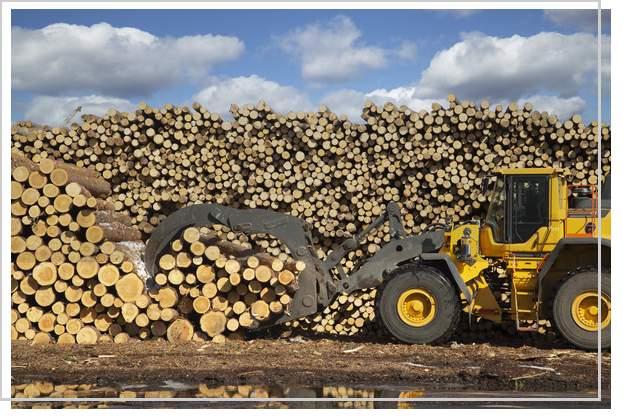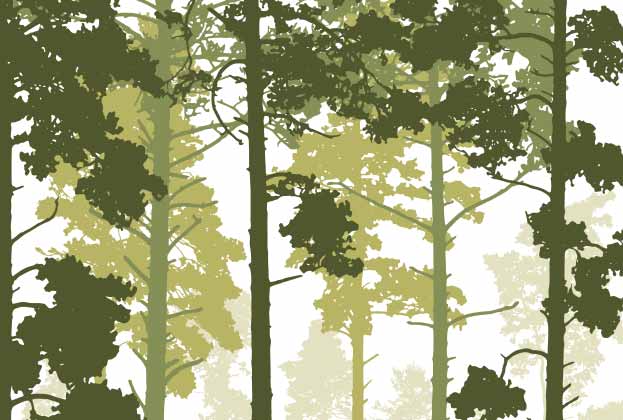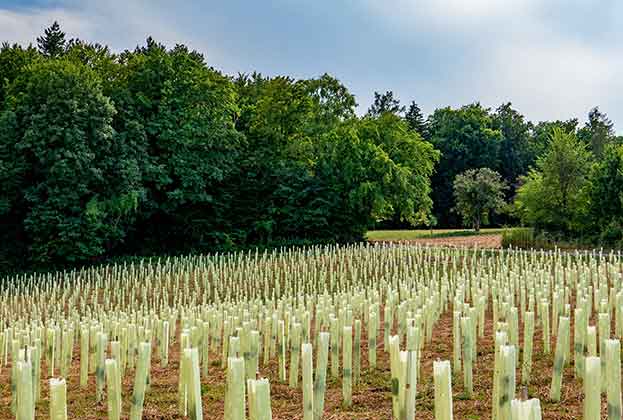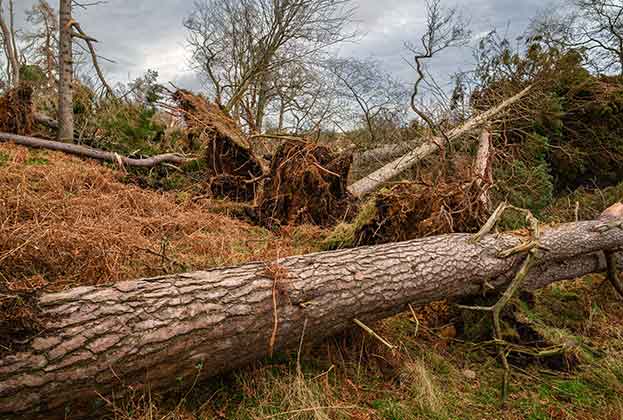Experience from mainland Europe shows that over the next 10-15 years the majority of ash trees within infected woodland settings will decline and die as a result of ash dieback (formally known as chalara).
This fungal pathogen (Hymenoscyphus fraxineus), thought to have been in the UK since 2005, was not formally identified until 2012. It is thought that the disease, now widespread across the UK, arrived via imported planting stock and spore masses blown across the English Channel from Europe.
There is no cure or preventative treatment which will alleviate or mitigate the pathogen, however there are actions which a landowner can take to manage the situation and, due to its lifecycle nature there is some hope ash trees in hedgerows and in more open or individual settings may evade the pathogen for a longer period. It is now known that a small proportion of ash trees have a resistance to the disease.
Ecology and Symptoms
Symptoms of ash dieback include leaf loss, crown dieback and bark lesions in affected trees and heavily affected trees can become brittle and unstable. Affected trees are particularly hazardous when near a road, property or in areas of public access. In these circumstances a proactive approach and management plan is essential.
Effective management
Where ash trees are located in areas of high public access it is prudent to undertake a tree safety survey.
Once the condition of the trees is known a work programme can then be drawn up including details on timescales, road management scheme requirements and any felling licence application needs, all of which can take time to obtain.
A proactive approach to the management of ash dieback through tree surveying and planning is the key to reducing liability and costs in dealing with the disease.
Where the land holding is predominantly ash woodland there are generally fewer issues around safety as trees are away from ‘targets’. Here, management is more concerned with woodland sustainability and potentially timber harvesting. Proactive management is vital where woodlands have a medium to high component of ash. Here, having a woodland management plan in place helps in dealing with the issue.
Where timber production is a primary objective, the best way to reduce future disease impact is to promote fast, healthy growth of selected trees through heavy thinning of ash stands. While there is now an increase of ash saw logs coming to market, affected trees can quickly degrade through bark lesion damage and staining thus prompt felling is key if timber value is to be maximised.
It should be noted that the felling of diseased ash within woodlands continues to require a felling licence from the Forestry Commission. Woodland owners and managers should also be aware of good practice guidance on European Protected species and environmental protection guidance when undertaking felling operations.
Grants are available through the Countryside Stewardship Woodland Tree Health Scheme offer. However, in order to secure either or both of the grants available it is recommended that a woodland management plan is in place.






